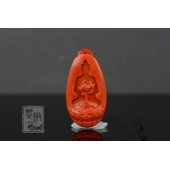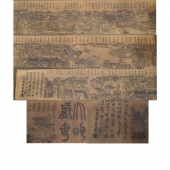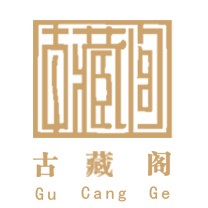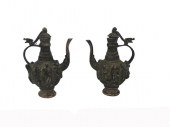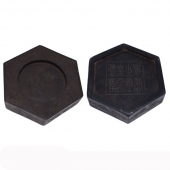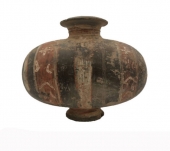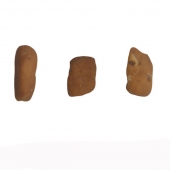袁江作大明盛世图
(平台服务时间:周一到周五 9:00-17:00)
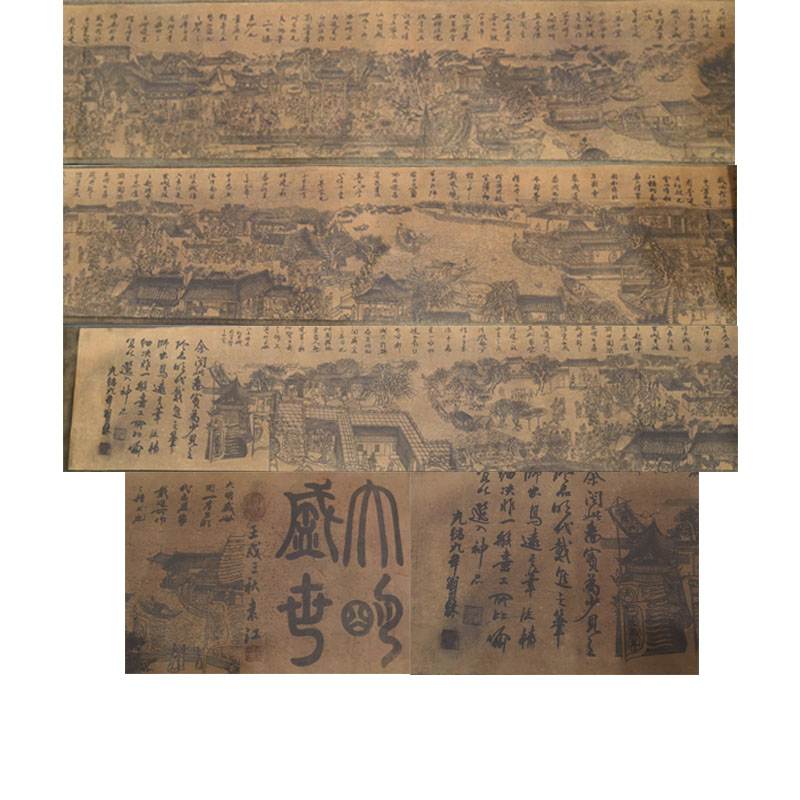
- 资质:
- 评分:
1分 2分 3分 4分 5分 6分 7分 8分 9分 10分 7分
- 印象:
- 经营时间:2023年
- 展厅面积:1500平米
- 地 区:重庆-渝北
| 尺寸 | 403x26.5(cm) | 创作年代 | 不详 | ||
|---|---|---|---|---|---|
| 作品分类 | 水彩画 | 材质 | 纸面 | 题材 | 人物 |
| 作品标签 | |||||
| 适用空间 | |||||
作品介绍
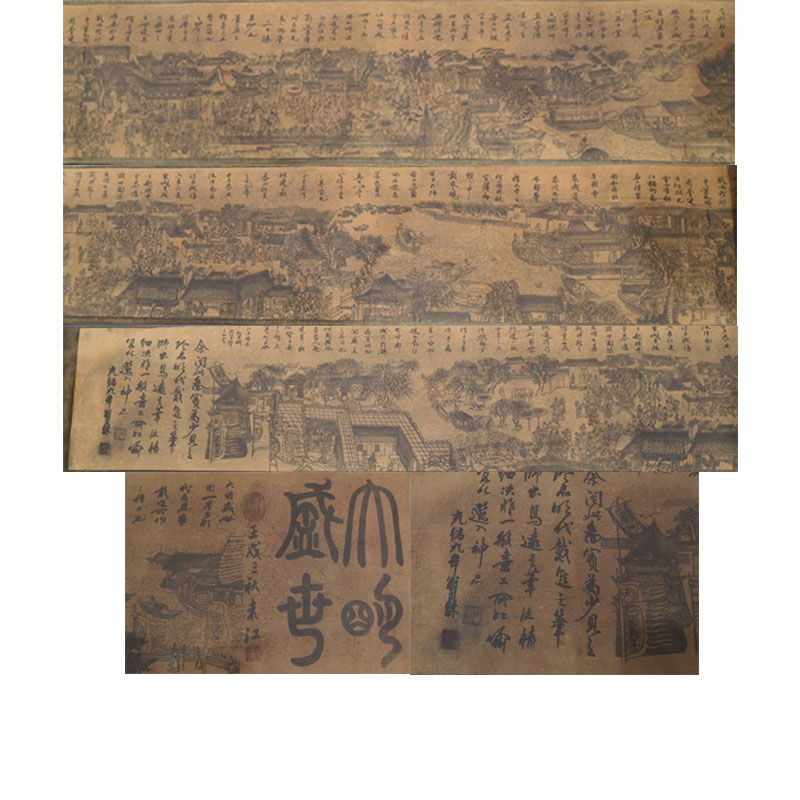
中文介绍:
《大明盛世》画的主要内容是:公元1433年,以南京夫子庙为中心的明朝秦淮风光。明宣宗宣德八年春,南京久旱。七岁的皇太子朱祁镇,即后来的明英宗,随父皇明太孙宣宗朱瞻基、生母孙皇后,其弟朱祁钰即后来的代宗,御使振恤,巡游南京夫子庙。明朝四世三位皇帝(朱祁镇两次出任皇帝),英宗的母亲孙皇后皇太后,同时出现在一幅画中。画中还有其他未考的皇亲国戚。成画的时间是公元1442年、明英宗正统七年壬戌。其时英宗朱祁镇已十六岁,亲政的年龄。
《大明盛世图》书画卷共有五部分组成。
一、画题篆书大字,大明盛世,壬戌袁江。作品完成于明英宗正统七年,公元1442年。其时,戴进五十四岁。明宣宗一家人,御使南京秦淮河九年以后,太子朱祁镇已经登基明英宗皇帝七年。
二、主画面手卷,绢本,墨笔,铁线描和晕叶描。描绘南京通济门,直到聚宝门即今天的中华门,十里秦淮河明代民情风物,十处景观。夫子庙大成殿、天下文枢、文德桥、贡院等,564年前景观历历在目。画面上五百二十多位明代人物,皇帝皇后太子皇子等、明朝其他皇族,社会各界军民百姓,栩栩如生,秦淮河畔熙熙攘攘热热闹闹,好一幅明朝太平盛世图。
三、江苏抚台柳宏识行书,介绍作者戴进、画境。行书位于画上方留白处,与画卷同始终。
四、清朝翁同龢光绪九年行书评。翁当时任工部尚书充军机大臣。行书评价如下:余阅此图实为少见之珍品明代戴进之笔师出马远其笔法精细决非一般画工所比喻宜以选入神品。
五、收藏印。万历鉴藏寳朱印,位于题跋。
此幅大明盛世图,长卷,绢本,题跋《大明盛世》,落款袁江。以南京夫子庙为中心的明朝秦淮风光。它是将真迹局部1:1比例原汁原味体现在这4米多的卷幅上。图中山峦起伏,雾霭缥缈,宫殿楼阁,丹陛石阶,重檐层扉,无不精致华美;宫苑内众人往来其中,周围草木扶疏,花影阑干,全景布局工整匀称,楼阁建筑及人物皆工笔重彩,为收藏佳品。这幅大明盛世图经过时间流逝难以掩盖岁月的痕迹,虽影响其品相,但是在真正懂行的藏友手里,就具有独特的历史价值和收藏价值!
英文翻译:The main contents of the painting Daming Flourishing Age are as follows: in 1433, the scenery of Qinhuai in Ming Dynasty centered on the Confucius Temple in Nanjing. In the spring of the eighth year of Xuande in Xuanzong of Ming Dynasty, Nanjing was in a long drought. Zhu Qiyu, the seven-year-old emperor's prince, later Ming Yingzong, accompanied his father, Emperor Ming's grandson, Xuan Zong, Zhu Zhanji, and his biological mother, Queen Sun. His younger brother, Zhu Qiyu, later proxy, the Royal envoy, Zhenyi, toured the Confucius Temple in Nanjing. Three emperors of Ming Dynasty IV (Zhu Qizhen served as emperor twice), Queen Sun, mother of Emperor Yingzong, appeared in a painting at the same time. There are other imperial relatives who have not been tested in the painting. The time of painting was 1442 A.D. and 7 years of Ming Ying orthodoxy. At that time, Zhu Qizhen of Yingzong was sixteen years old, the age of pro-government.
There are five parts in the painting and calligraphy volume of Daming Flourishing Age Tu.
First, painting inscriptions, seal letters and big characters, the flourishing of the Daming Dynasty, Renxu Yuan Jiang. The work was completed in the seven years of Ming Ying orthodoxy, 1442 A.D. At that time, Dai Jin was 54 years old. Nine years after the emperor Xuanzong of Ming Dynasty and the imperial envoy of Qinhuai River in Nanjing, Zhu Qizhen, Prince of Ming Dynasty, was crowned Emperor Yingzong for seven years.
2. The main picture is handscroll, silk, ink, wire and halo. Describe Tongji Gate in Nanjing, until Jubao Gate is today's Zhonghua Gate, ten miles Qinhuai River Ming Dynasty folklore, ten landscapes. Confucius Temple Dacheng Hall, Tianxia Wenshu, Wendeqiao, Gongyuan and so on, 564 years of prospects are clearly visible. More than 520 Ming Dynasty figures, emperors, empresses, princes and other imperial clans in the Ming Dynasty, the military and civilians from all walks of life, the Qinhuai River is bustling and lively, a good picture of the prosperity of the Ming Dynasty.
Third, Liu Hong, Futai, Jiangsu Province, knows how to write a travel book, introducing the author Dai Jin and his paintings. The running script is situated in the blank space above the painting and is always the same as the picture scroll.
4. Nine-year book review by Weng Tong and He Guangxu in the Qing Dynasty. Weng was then Minister of military aircraft in Shangshu of the Ministry of Works. The evaluation of the running script is as follows: Yu Juan's painting is a rare treasure of Ming Dynasty. The fine brushwork of Dai Jin's painter, Ma Yuan, is by no means a metaphor for ordinary painters to choose a god's work.
5. Collection Seals. Wanlijian collects the Zhu seal on the inscriptions and postscripts.
This picture of the flourishing age of the Daming Dynasty, long scroll, silk edition, inscription and postscript "The flourishing age of the Daming Dynasty", falls into the Yuan River. The scenery of Qinhuai in Ming Dynasty centered on Nanjing Confucius Temple. It reflects the original flavor of the local 1:1 proportion of the real work on the roll of more than 4 meters. The hills, mists, palaces, pavilions, stone steps and double eaves are all exquisite and beautiful; the palace is surrounded by sparse vegetation, dried flowers and shadows, and the panoramic layout is well-proportioned. The Pavilion buildings and characters are artificially painted, which is a good collection. This picture of the flourishing age of the Daming Dynasty can hardly hide the traces of the years after the passage of time. Although it affects its taste, it has unique historical value and collection value in the hands of Tibetan friends who really know how to do it.
韩文翻译:《 대명성세 》 의 주요 내용은 기원 1433년 남경 부자묘를 중심으로 명나라 진회풍광이다.명선종 선덕은 8년 봄, 남경은 오랜 가뭄이다.7세의 황태자 주기진, 즉 나중 명영종, 아버지 황명태 손선종 주첨기, 생모 손황후, 그 제제 주기 옥의 대종, 어사진휼, 남경부자묘를 순유하고 있다.명나라 4세 세 황제 (주기진 두 차례 황제), 영종의 어머니 손황후 황태후, 동시에 한 폭의 그림에 등장했다.그림 속에는 아직 보지 않은 왕친척도 있다.성화 시간은 서기 1442년, 명영종 정통 7년 임술이다.그 당시 영종주기진은 이미 16세, 친정 나이였다.
《 대명 성세도 》 의 책 그림은 모두 다섯 부분으로 구성되어 있다.
일, 화제 전서 대명 성세, 임술 원강.작품은 명영종의 정통 7년, 서기 1442년에 완성됐다.그 때 504세에 끼었다.명선종 일가, 어사 남경 진회하 9년 이후 태자 주기진은 이미 명영종황제 7년에 올랐다.
둘째, 메인 화면 수첩, 견본, 먹펜, 철선 묘사 및 현기증.남경통제문을 그리며, 회보문 즉 오늘의 중화문, 10리 진회하 명대의 민정풍물, 10곳 경관.부자묘 대성전 천하문추 문덕교 공원 등 564년 전 경관이 눈에 선하다.화면에는 5000여 명의 명대 인물, 황제 황후 태자 황자 등, 명나라 다른 황족, 사회 각계 군인 백성, 생생하게 살아 있는 것, 진회 강변에는 붐비며 난리가 치솟으며 명나라 태평성세도를 이루었다.
셋째, 강소부대 류홍식 행서, 저자 대진, 화경 안내.행서는 그림 위쪽 유백소에 위치하여 화권과 시종일관 동일한다.
4, 청조옹은 동일한 40866의 광서 9년행 서평.옹은 당시 공부 상서 충군기 대신에 임했다.행서평가는 다음과 같다: 이 그림은 보기 드문 진품 명대에 쓴 필사가 마원 (마원) 을 내세우는 필법이 보통화공에 비유한 것이 신품에 선출되는 것이 좋다.
소장인.만력은 장서를 2353939사 주인으로, 제보에 위치하고 있다.
이 대명 성세도, 긴 두루마리, 견본, 발문'대명 성세'를 제치고, 낙관 원강.남경 부자묘를 중심으로 한 명나라 진회풍.그것은 진적 부분의 1:1 비율 원액을 이 4미터 넘게 구현한 볼륨에 나타난다.그림 속 산봉우리 기복, 안개, 안개, 궁전 누각, 단돌계단, 중추층의 문짝, 정교하지 않다, 궁원 내에서 많은 사람들이 왕래하고, 주위 초목 이 무성하고, 꽃그림자가 무성하다, 전경 배치, 건물 및 인물이 모두 공필, 수장 가품.이 대명성세도는 시간을 지나 세월의 흔적을 감추기 어렵지만, 그 품목에 영향을 끼쳤지만, 진정한 철부지 수중에 독특한 역사적 가치와 소장가치를 가지고 있다!
日语翻译:「大明盛世」の絵の主な内容は、紀元1433年に南京夫子廟を中心とした明の秦淮河風景です。明宣宗宣徳八年の春、南京は日照り続きです。七歳の皇太子朱祁鎮、すなわち後の明英宗は、父皇明太孫宣宗朱瞻基、生母孫皇后に随行して、その弟の朱祁玉が後の代宗であり、御使の弔いをして、南京夫子廟を巡ります。明朝四世の三人の皇帝(朱祁鎮は二回皇帝に就任します)、英宗の母の孫皇后の皇太后が同時に一枚の絵の中に現れます。絵の中には他にも未試験の皇国戚がいます。絵の時間は紀元1442年、明英宗正統七年壬戌です。当時、英宗の朱祁鎮は16歳で、親政の年だった。
『大明盛世図』の絵巻は全部で5つの部分から構成されています。
一、画題篆書の大字、大明盛世、壬戌袁江。作品は明英宗正統七年、紀元1442年に完成しました。その時、54歳になりました。明宣宗の家族で、御使南京秦淮河九年以降、皇太子の朱祁鎮はすでに明英宗皇帝に登基して七年間になりました。
二、メイン画面の手巻き、絹本、墨書、鉄線描写と暈葉画。南京の通済門を描いて、宝門がすなわち今日の中華門まで、十里秦淮河明代の民情風物、十か所の景観です。夫の子の廟の大成殿、天下の文枢、文徳橋、貢院など、564年前の景観は歴然としています。画面の上で五百二十数名の明代の人物、皇帝の皇后太子の皇子など、明朝のその他の皇族、社会の各界の軍民の庶民、生き生きとしていて、秦淮河の畔はにぎやかでにぎやかで騒々しいです。
三、江蘇撫台柳宏は行書を知っていて、作者の戴進、画境を紹介します。行書は絵の上の白いところにあります。絵巻と同じです。
四、清の翁同_光緒九年行書評。翁は当時労働部尚書充軍機大臣を務めていた。行書は次のように評価されています。この絵を読むと珍しいものです。明代の戴進の筆師、出馬遠の筆法は決して一般的な画工ではないです。
五、収蔵印。万暦鑑蔵_朱印は、跋文にあります。
この幅は大明盛世図で、長巻、絹本で、「大明盛世」と題して、袁江に落款します。南京夫子廟を中心とした明朝の淮河風景。これは本物の迹の局部の1:1の割合のもとの味をこの4メートル余りの巻幅の上で体现するのです。図の中で山並みが起伏していて、霧や霧が漂っていて、宮殿の楼閣、丹陛下が石の階、ひさしの層の扉が全部精巧で華美です。宮苑内の人々が往来しています。周囲の草木がまばらで、花の影が入り乱れていて、全体の配置が整っていて、楼閣の建築と人物は全部手作業で重彩を飾っています。この大明盛世図は時間の経過を経て歳月の痕跡を隠すことができなくて、その品物の様子に影響しますが、しかし本当に玄人なチベットの友達の手の中で、独特な歴史の価値と収蔵の価値を持ちます!
法语翻译:Le contenu principal de Daming Shengshi "peinture est: 1433, le paysage de la dynastie Ming Qinhuai à Nanjing Confucius Temple pour le Centre.Printemps, Ming Xuanzong Xuande Nanjing de la sécheresse de huit ans.Zhu qizhen, fils de l 'empereur, âgé de sept ans, puis Ming Yingzong, accompagné de son père, l' empereur Ming taisun Xuanzong Zhu Zhi - ji, de sa mère et de son petit - fils, son frère Zhu qiyu, plus tard descendant, l 'ange Zheng - shik, a visité le temple Des fils et des fils de Nanjing.Trois Empereurs de la dynastie Ming IV (Zhu qizhen a été nommé empereur deux fois) et la Reine Sun, mère de Yingzong, apparaissent dans un tableau.Il y a d 'autres cousins royaux qui n' ont pas encore été examinés.L 'heure de la peinture est en 1442, sept ans d' orthodoxie Ming.Ying Zong Zhu Qi Zhen avait alors 16 ans, l 'âge de la consanguinité.
Le livre de l 'Atlas du monde est composé de cinq parties.
Un tableau, de caractères d'étanchéité Daming Shengshi, Xu Yuan Ren.Le travail est fini 于明英 secte orthodoxe de sept ans et 1442 ad.En attendant, Dai Jin 54 ans.Une famille Ming Xuanzong, Qinhuai rivière royal de sorte que, après neuf ans de règne de l'empereur Ming Yingzong Prince 朱祁镇 déjà sept ans.
Main Band, seringue, encre, Iron line and halo Leaf.Description de la porte de Tongji à Nanjing, jusqu 'à la porte de jubo, aujourd' hui la porte de la Chine, 10 Li Qinhuai River Ming du folklore, 10 paysages.Le temple des couples, le Centre de littérature du monde, wendqiao, gongyuan, et ainsi de suite, le paysage a été enregistré il y a 564 ans.Plus de 520 personnages de la dynastie Ming, la Reine impériale, le Prince héritier, et ainsi de suite, les autres royaumes de la dynastie Ming, le peuple civil et militaire de tous les milieux de la société, vivants et animés autour du fleuve Qinhuai, une carte de la paix de la dynastie Ming.
Liu Hong, Futai, Jiangsu, a présenté l 'auteur à l' entrée, le paysage.Le livre est situé au - dessus de la peinture en blanc, toujours avec le livre.
Quatrièmement, la dynastie Qing Weng Tonghe Guangxu neuf ans de rangées de critiques.Weng au moment du Ministre de l'exil de Shang Ren.Le script d'évaluation comme suit: 余阅 des trésors de ce Graphe est rare de la dynastie Ming 戴进之 stylo professeurs cheval son pinceau peintre figuratif généralement fine n'est pas approprié pour élu de rafraîchissement.
Cinq, Indy.Wanli Kam caché bébé 朱印 situé PostScript.
Cette photo de Daming Shengshi figure, défilement, de défilement, PostScript "Daming Shengshi", à la fois yuan.Paysage de la dynastie Ming Qinhuai à Nanjing Confucius Temple pour le Centre.C'est un authentique de 1: 1 d'origine locale dans cette proportion de 4 mètres de la bande.Les montagnes du Palais sont en vogue, brumeuses, les greniers du Palais, les marches de pierre de sa Majesté Dan, les toits lourds, les toits d 'entrée, de beauté parfaite.Il est difficile de dissimuler les traces des années après le passage du temps, même s' il affecte la qualité de ses produits, mais dans les mains de ses amis tibétains qui connaissent bien la valeur historique et la valeur de la collection!
作者介绍
卢付平, 男,1975年4月生,汉族,甘肃定西人。中国历史博物馆研究员、文物鉴定委员会委员。1993年毕业于南京复旦大学历史系(五年制)。自1996年起至今,一直在中国历史博物馆(现为湖北博物馆)工作,从事碑帖、法书编目,鉴定和研究工作,同时研究其它文物和历史。

 黄琦
黄琦 贾平西
贾平西 测试用艺术
测试用艺术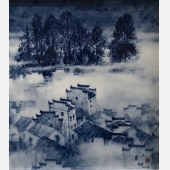 郭军
郭军